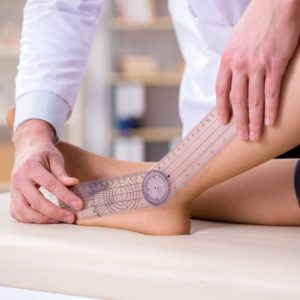
Why? Because we can usually solve the patient’s pain with minimally invasive surgical methods. The procedure is called a microdiscectomy. At Texas Neurosurgery, Dr. Barnett, Dr. Michael, Dr. Bidiwala, and Dr. Mayer perform these procedures.
What is a microdiscectomy?
This procedure is performed through a small incision in the midline of the lower back. And we mean small — the incision length is typically only 1 to 1.5 inches long! The goal is to go in and remove the portion of the disc that has herniated and is pushing on the nerve root. In most cases, some of the facet joint, is removed to further ensure the nerve compression is relieved.
How is a microdiscectomy performed?
To access the disc causing the trouble, the small incision is made in the midline of the low back, directly above the herniated disc. The back muscles need to be moved. Since they run vertically, they can be pushed to the side rather than needing to be cut. This makes for easier recovery. The muscles are lifted off of the bony arch, called the lamina, on the back of the spine. In most cases, an operating microscope is inserted in a tube through the tiny incision to allow our surgeons to clearly visualize the nerve root.
To facilitate access to the disc and the nerve root, in most cases we remove a portion of the inside facet joint. This also helps ensure compression on the nerve root is minimized or totally alleviated. Next, we remove the membrane over the nerve root. This membrane is called the ligamentum flavum.
Now, the nerve root is gently moved to the side and we cut away the portion of the disc that has pushed outward onto the nerve root. We only remove the herniated portion of the disc, leaving the healthy remainder intact.
We then reposition the nerve root and back muscles and close the small incision.
Afterwards
In most cases, the patient has immediate pain relief now that the disc is no longer irritating the nerve root. In some cases, it may take weeks or months for the nerve root to fully heal. During this time, there can be enduring numbness or weakness, but as the nerve root heals, this decreases and normal function and feeling returns.
Do you have chronic pain in one of your legs and the corresponding foot? You could have a herniated disc and could benefit from a microdiscectomy. Call the team at Texas Neurosurgery, (214) 823-2052, to schedule a consultation.

